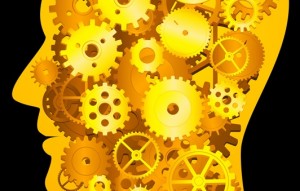 The EPA’s proposed Clean Power Plan, meant to reduce carbon by 30% by 2030, is expected to be accomplished through a combination of improving existing power plants, switching to cleaner generation, boosting renewables, and improving energy efficiency. It is more than likely that the global economy’s ability to innovate and drive economies of scale will significantly ease this transition, providing as yet unknown but superior alternatives.
The EPA’s proposed Clean Power Plan, meant to reduce carbon by 30% by 2030, is expected to be accomplished through a combination of improving existing power plants, switching to cleaner generation, boosting renewables, and improving energy efficiency. It is more than likely that the global economy’s ability to innovate and drive economies of scale will significantly ease this transition, providing as yet unknown but superior alternatives.
Consider this: the wind and solar industries barely existed five years ago. Today, costs of wind have fallen by 58% in the last five years, and the price of installed solar has plummeted by 75% over the same period. Deutsche Bank estimates solar may fall another 30% in the coming three years. On the efficiency front, LED lighting has improved by almost 50% in just three years
Meanwhile, Lockheed publicly states that it expects to develop a prototype 100 megawatt fusion reactor the size of a truck in five years; Stanford has developed peel and stick solar; and Rice University created a paint-on lithium ion battery technology. With ever-stronger supercomputers – some of which in five years may be capable of 1000x today’s computing power – innovation in energy technologies will further accelerate.
The Clean Power Plan will accelerate the process of innovation through necessity and increase the number of stakeholders involved. Quite possibly, we will reach the EPA 2030 goals with minimal difficulty or cost, via technologies we don’t even know about today, by virtue of the accelerating and unstoppable nature of technological progress.
Models and projections have not fully accounted for technology advances, market economies of scale and innovation, and our forecasts have been bad in the last five to ten years as a result. We should model them into the policy and energy planning processes, allowing us to fully capitalize on the benefits of innovation. At a minimum, every forecast should have an upside scenario explicitly associated with change related to technology.
It looks backwards to me. We are making plans and yes, regulations hat require changes based on technology that has not yet been developed and costs that have not been… Read more »
Jack – thanks for your comments. My point is simply this: Innovation is a real force created by the decisions of billions of individuals, much like population growth. One cannot… Read more »
Peter, Jane, You may have misunderstood my remarks. Or perhaps there is a misunderstanding of just what innovation is, and is not. My dictionary says “innovate” is to make changes,… Read more »
Jack – I envy your background. I’m not suggesting we make laws forcing specific types of innovation. Rather, I am saying something like ‘if we decide the goal is to… Read more »
I share your optimism that we can meet the EPA Clean Power Plan goals fairly easily in spite of the fossil industries efforts to block change. While I loved reading… Read more »
Jane – your points are well taken. Taking an agnostic view (that is not using words such as optimism and pessimism w/r/t the EPA plan), to me the outcome is… Read more »
Peter – I agree that technology, like toothpaste, can’t be put back in the tube … but getting that technology on the market where it really develops is, I guess,… Read more »
Good points. What I think is different at this point in time is the number of proliferating technologies and the sheer number of technological advances and breakthroughs trumpeted on –… Read more »
Peter: Government can and should play a leading role in fostering clean energy innovation. The problem and the solution are simple. The problem is that fossil fuel companies can pollute… Read more »
Dan – thanks for your thoughts on the matter. I personally believe we are living in a world of immature technologies and business models – the latter of which don’t… Read more »
Peter: I agree with you that technologies will be developed and deployed if the right economic incentives are put in place. What makes climate change different than almost all other… Read more »
You’re right that innovation frequently provides fabulous solutions to seemingly intractable problems. It’s tempting to design policies that take advantage of the power of innovation. The problem with this approach… Read more »
Thanks, Jay – To your point, ‘the problem with innovation is that it is not predictable,’ I would agree, with respect to a single specific technology. But with a portfolio… Read more »
Peter: The question is not whether there will be innovation or not, but rather what policies can be put in place to drive beneficial innovation. I think the answer to… Read more »
Peter I do not think you need worry about innovation changing the EPA goals because of funding policies and very limited thinking. I do not have any belief that they… Read more »